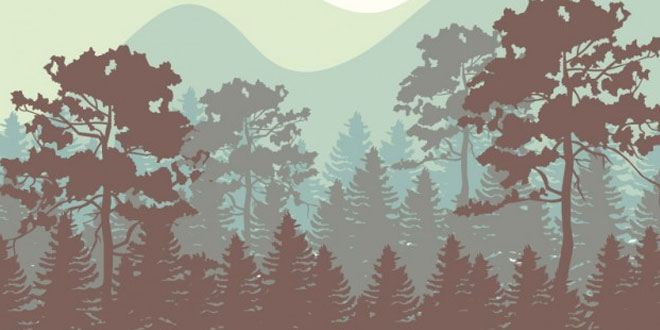Question: Distinguish Between Tropical Evergreen and Deciduous Forests
Answer: Tropical Evergreen Forests:
- Evergreen forests (or Tropical Rain Forests) are found on the rainy parts of the Western Ghats and the island groups of Lakshadweep and the Andaman and Nicobar Islands.
- Ebony, mahogany and rosewood are the most important trees of the Evergreen Forests.Teak is the most dominant species of the deciduous forests. Other trees found here are bamboos, sal, shisham, sandalwood and khair.
Deciduous Forests:
- Deciduous forests are found mostly in the eastern parts of the country – northeastern states along the foothills of the Himalayas, Jharkhand, West Orissa and Chhattisgarh and the eastern slopes of the Western Ghats.
- Trees of the Evergreen Forests don’t shed their leaves at one and the same time, so these forests remain evergreen.The trees of the deciduous Forests shed their leaves for about six to eight weeks in summer.
Question: Name different types of Vegetation found in India and describe the vegetation of high altitudes.
Answer: The following major types of vegetation may be identified in our country:
- Tropical Rain Forests
- Tropical Deciduous Forests
- Tropical Thorn Forests and Scrubs
- Montane Forests
- Mangrove Forests
The vegetation of high altitudes are Montane Forests. In mountainous areas, the decrease in temperature with increasing altitude leads to the corresponding change in natural vegetation. As such, there is a succession of natural vegetation belts in the same order as we see from the tropical to the tundra region. The wet temperate type of forests are found between a height of 1000 and 2000 meters. Evergreen broad-leaf trees such as oaks and chestnuts predominate. Between 1500 and 3000 meters, temperate forests containing coniferous trees like pine, deodar, silver fir, spruce and cedar, are found. These forests cover mostly the southern slopes of the Himalayas and places having high altitude in southern and northeast India.
At higher elevations, temperate grasslands are common. At high altitudes, generally more than 3,600 meters above sea level, temperate forests and grasslands give way to the Alpine vegetation. Silver fir, junipers, pines and birches are the common trees of these forests. However, they get progressively stunted as they approach the snow-line. Ultimately through shrubs and scrubs, they merge into the Alpine grasslands. These are used extensively for grazing by nomadic tribes like the Gujjars and the Bakarwals. At higher altitudes, mosses and lichens form part of tundra vegetation. The common animals found in these forests are Kashmir stag, spotted dear, wild sheep, jack rabbit, Tibetan antelope, yak, snow leopard, squirrels, Shaggy horn wild ibex, bear and rare red panda, sheep and goats with thick hair.
Question: Quite a few species of plants and animals are endangered in India. Why?
Answer: Quite a few animal species are endangered and some have become extinct. The main causes for this major threat to nature are hunting by greedy hunters for commercial purposes, pollution due to chemical and industrial waste, acid deposits, introduction of alien species and reckless cutting of the forests to bring land under cultivation and in-habitation, which are also responsible for the imbalance.
Question: Why has India a rich heritage of flora and fauna?
Answer: Our country India is one of the twelve-mega bio-diversity countries of the world. With about 47,000 plant species India occupies tenth place in the world and fourth in Asia in plant diversity. There are about 15,000 flowering plants in India, which account for 6 per cent in the world’s total number of flowering plants. The country has many non-flowering plants such as ferns, algae and fungi. India also as 89,000 species of animals as well as a rich variety of fish in its fresh and marine waters.
 Class Notes NCERT Solutions for CBSE Students
Class Notes NCERT Solutions for CBSE Students



